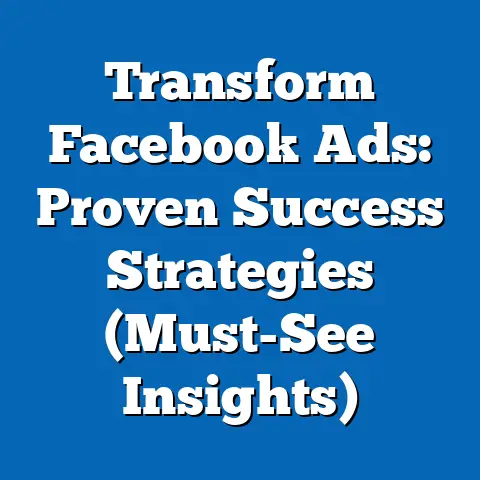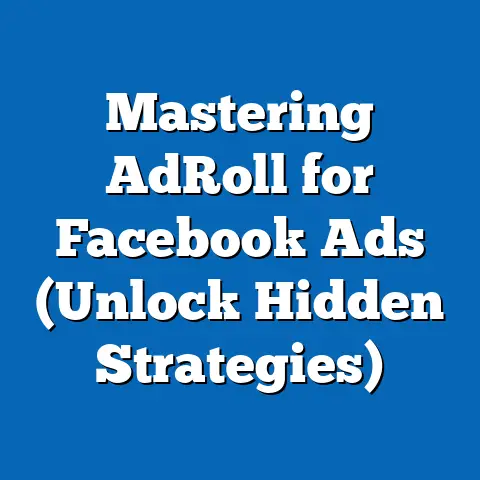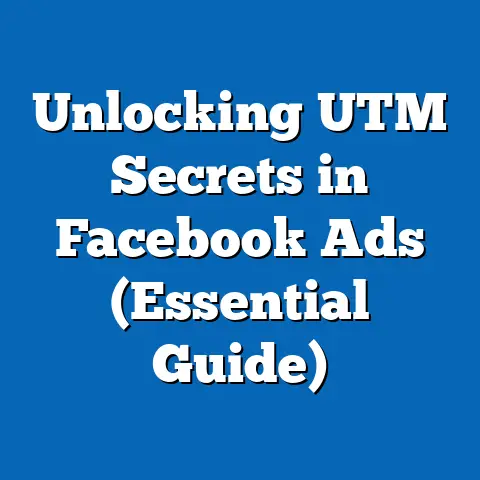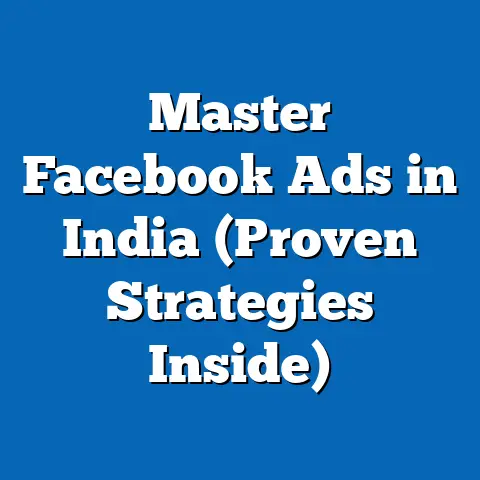Upload Music Video to Facebook (Ultimate Guide)
Imagine a world where a single music video, uploaded from a smartphone in a small-town bedroom, garners millions of views overnight, transforming an unknown artist into a global sensation. Contrast this with the early 2000s, when music distribution was tightly controlled by record labels and MTV airplay, leaving independent creators with little access to mass audiences. Today, platforms like Facebook have democratized content creation, with video content driving unprecedented engagement—over 8 billion daily video views on the platform as of 2023, according to Meta’s own reports.
This article explores the phenomenon of uploading music videos to Facebook, dissecting key trends in video content consumption, demographic engagement, and the platform’s evolving role in the creator economy. Recent data from Statista indicates that video posts on Facebook generate 59% more engagement than other content types, while eMarketer reports that 75% of U.S. internet users aged 18-34 have watched a video on social media in the past month. We’ll break down these trends by age, region, and historical context, comparing today’s digital landscape to a decade ago when Facebook was primarily a text-and-photo platform.
Additionally, we’ll provide a step-by-step guide to uploading music videos, optimizing them for reach, and navigating copyright challenges. Historical data shows that Facebook’s video viewership has grown by over 300% since 2015, per Socialbakers, reflecting a seismic shift in user behavior. Looking ahead, projections from Cisco suggest that video will account for 82% of global internet traffic by 2025, signaling even greater opportunities for music creators on platforms like Facebook.
Section 1: The Rise of Video Content on Facebook – A Statistical Snapshot
Explosive Growth in Video Engagement
Facebook has transformed from a social networking site into a video consumption juggernaut since introducing native video uploads in 2014. According to Meta’s Q3 2023 earnings report, the platform averages 8 billion daily video views, a figure that has doubled since 2018. This growth is fueled by algorithm changes prioritizing video content and the introduction of features like Facebook Watch and Reels, which cater to short-form video trends.
Video posts consistently outperform other formats, with a 59% higher engagement rate (likes, comments, shares) compared to static images or text updates, as reported by Statista in 2023. For music creators, this presents a unique opportunity: a well-crafted music video can go viral, leveraging Facebook’s vast user base of 3.05 billion monthly active users (MAUs) as of Q3 2023.
Why Music Videos Thrive
Music videos resonate particularly well due to their emotional and entertainment value. A 2022 study by Hootsuite found that 68% of social media users share videos that evoke strong emotions, and music often serves as a universal connector. Moreover, Facebook’s autoplay feature ensures videos start playing as users scroll, increasing the likelihood of capturing attention—unlike platforms like YouTube, where users must actively click to watch.
Section 2: Demographic Breakdown of Facebook Video Engagement
Age-Based Trends
Understanding who watches and engages with videos on Facebook is critical for music creators targeting specific audiences. Data from Pew Research Center (2023) shows that 70% of U.S. adults aged 18-29 use Facebook, with 82% of this group reporting they watch videos on the platform at least weekly. Engagement drops slightly among older demographics, with 65% of 30-49-year-olds and 48% of 50-64-year-olds consuming video content regularly.
For music videos, the 18-34 age bracket is the sweet spot, as this group is more likely to follow artists, share content, and engage with trending sounds. A 2023 eMarketer report highlights that 75% of U.S. internet users aged 18-34 have watched a music-related video on social media in the past month, compared to just 42% of those aged 55+.
Gender and Regional Variations
Gender differences in video engagement are minimal, with Statista (2023) reporting that 52% of male users and 48% of female users watch videos on Facebook regularly. However, regional variations are more pronounced. In North America, 78% of Facebook users engage with video content, while in Asia-Pacific—where Facebook has over 1.2 billion MAUs—penetration is slightly lower at 65%, per DataReportal (2023), likely due to competition from platforms like TikTok and regional apps.
For music creators, targeting urban centers in high-engagement regions like the U.S., India, and Brazil can maximize reach. India alone accounts for 314 million Facebook users, with a growing appetite for music content driven by Bollywood and independent artists, according to a 2023 report by Nielsen.
Section 3: Historical Trends – From Text to Video Dominance
The Early Days of Facebook (2004-2014)
When Facebook launched in 2004, it was a text-and-photo-centric platform designed for college students to connect. Video uploads were not supported until 2007, and even then, they were clunky, limited by file size, and overshadowed by YouTube’s dominance. By 2010, only 12% of Facebook posts included video content, per a Socialbakers historical analysis, and engagement was negligible compared to status updates.
This era saw music promotion confined to links redirecting to YouTube or MySpace, with little direct interaction on Facebook itself. Independent artists struggled to gain traction without label-backed marketing budgets.
The Video Boom (2015-Present)
The introduction of native video in 2014 marked a turning point. By 2015, Facebook reported 4 billion daily video views, a figure that doubled to 8 billion by 2018 and stabilized at that level through 2023, per Meta’s annual reports. The platform’s algorithm began prioritizing video content, especially after the 2016 pivot to combat declining user engagement amid competition from Snapchat and Instagram.
For music creators, this shift was transformative. A 2017 study by Buffer found that music-related video posts saw a 72% increase in organic reach compared to 2014 levels, as Facebook’s autoplay and sharing features amplified visibility. Today, features like Reels and live streaming allow artists to upload snippets or full music videos, engage with fans in real-time, and monetize through ads or fan subscriptions.
Comparison Over Time
Comparing 2010 to 2023, video content’s share of total Facebook posts has risen from 12% to over 40%, per Socialbakers data. Engagement rates for video have grown by 300% in the same period, reflecting a cultural shift toward visual storytelling. Music videos, once a niche, now compete with short-form trends driven by TikTok-style content, forcing creators to adapt to shorter, punchier formats even on Facebook.
Section 4: Contextual Factors Driving Music Video Trends on Facebook
Algorithm and Feature Evolution
Facebook’s algorithm heavily favors video content, especially since the 2018 update that prioritized “meaningful interactions.” Videos that generate comments and shares—common for music content—receive higher visibility in users’ feeds. The introduction of Reels in 2020, mimicking TikTok’s short-form model, has further boosted music video snippets, with Meta reporting a 40% increase in Reels views year-over-year in 2023.
Cultural Shifts and Mobile Usage
The rise of mobile internet has been a game-changer. DataReportal (2023) notes that 98% of Facebook users access the platform via mobile devices, making quick, scrollable video content like music clips ideal for on-the-go consumption. Culturally, younger generations value authenticity and direct artist-fan interaction, which music videos and live streams on Facebook facilitate.
Competition from Other Platforms
While Facebook remains a giant, competition from TikTok (1.5 billion MAUs) and YouTube (2.7 billion MAUs) pressures creators to cross-post content. TikTok’s algorithm excels at virality for music snippets, with 67% of users discovering new songs on the app, per a 2022 MRC Data study. However, Facebook’s older demographic and community features (like Groups) offer a complementary audience for deeper engagement.
Section 5: The Ultimate Guide to Uploading Music Videos on Facebook
Step 1: Preparing Your Music Video
Before uploading, ensure your video meets Facebook’s technical requirements. The platform supports MP4 and MOV formats, with a maximum file size of 10 GB and a length of up to 240 minutes, though shorter videos (1-3 minutes) perform best for music content, per Hootsuite (2023). Optimize resolution to at least 1080p for clarity, and use a 9:16 aspect ratio for Reels or Stories to cater to mobile viewers.
Equally important is securing rights to the music and visuals. Facebook’s Content ID system scans uploads for copyrighted material, and violations can result in muted audio or removed videos. Use royalty-free tracks or obtain explicit permission if covering another artist’s work.
Step 2: Uploading and Optimizing
To upload, navigate to your profile or page, click “Create Post,” and select “Photo/Video.” Drag your file or browse to upload, then add a compelling caption with relevant hashtags (#NewMusic, #MusicVideo) to boost discoverability. Tag collaborators and use a thumbnail that grabs attention—bright colors or expressive faces work best, as 85% of users watch videos with sound off initially, per Digiday (2022).
Post at peak times for your audience (typically evenings or weekends), using Facebook Insights to analyze when your followers are active. Enable auto-captions to make content accessible, increasing engagement by 12%, according to a 2021 study by Facebook.
Step 3: Promoting and Engaging
After uploading, share the video in relevant Facebook Groups (e.g., music fan communities) and encourage fans to comment and tag friends—interactions boost algorithmic reach. Consider boosting the post with a small ad budget; Meta reports that $5-10 can increase reach by 200% for niche content. Respond to comments promptly to foster community and signal engagement to the algorithm.
For monetization, enroll in Facebook’s In-Stream Ads program if eligible (requires 10,000 followers and 600,000 minutes of viewership in 60 days). This allows mid-roll ads in longer videos, with creators earning 55% of ad revenue, per Meta’s 2023 creator guidelines.
Step 4: Navigating Challenges
Copyright strikes are a common hurdle. If flagged, appeal through Facebook’s Creator Studio with proof of ownership or licensing. Low engagement can also frustrate creators—combat this by cross-posting teasers on Instagram or TikTok to drive traffic back to Facebook, where longer content can live.
Section 6: Future Projections and Implications
Growth of Video Content
Cisco’s 2023 Visual Networking Index forecasts that video will comprise 82% of global internet traffic by 2025, up from 73% in 2020. For Facebook, this suggests continued investment in video tools like Reels and live streaming, potentially integrating AI-driven editing features for creators. Music videos, especially short-form, are poised to benefit as attention spans shrink—eMarketer predicts a 25% increase in short video consumption by 2025.
Demographic Shifts
As Gen Z and Millennials remain core video consumers, aging populations may also increase engagement. Pew Research (2023) projects that by 2030, 55% of adults over 50 will regularly use social media for video content, up from 48% today. Music creators can tap nostalgia by targeting older demographics with throwback genres or covers.
Monetization and Platform Competition
Facebook’s push for creator monetization (e.g., subscriptions, tipped live streams) will likely intensify, with Meta aiming to pay out $1 billion to creators by 2024. However, TikTok and YouTube Shorts will challenge Facebook’s dominance in music discovery, per a 2023 Forrester report predicting a 30% shift of younger users to TikTok by 2026. Creators must adopt a multi-platform strategy, using Facebook for community building and longer content while leveraging TikTok for viral reach.
Conclusion: Seizing the Opportunity
Uploading music videos to Facebook offers creators an unparalleled chance to reach a diverse, global audience, backed by the platform’s 3 billion users and video-first algorithm. From an 8 billion daily video view count to a 59% higher engagement rate for video posts, the data underscores Facebook’s potential as a music promotion hub. Demographic insights reveal the 18-34 age group as the most active, while historical trends highlight a 300% growth in video engagement since 2015.
By following the practical steps outlined—preparing high-quality content, optimizing uploads, and navigating copyright—artists can maximize reach and monetization. Looking ahead, the projected dominance of video traffic (82% by 2025) and evolving creator tools suggest that Facebook will remain a vital platform, even amid fierce competition. For independent musicians and labels alike, mastering Facebook video uploads isn’t just a tactic—it’s a gateway to the future of music distribution.






